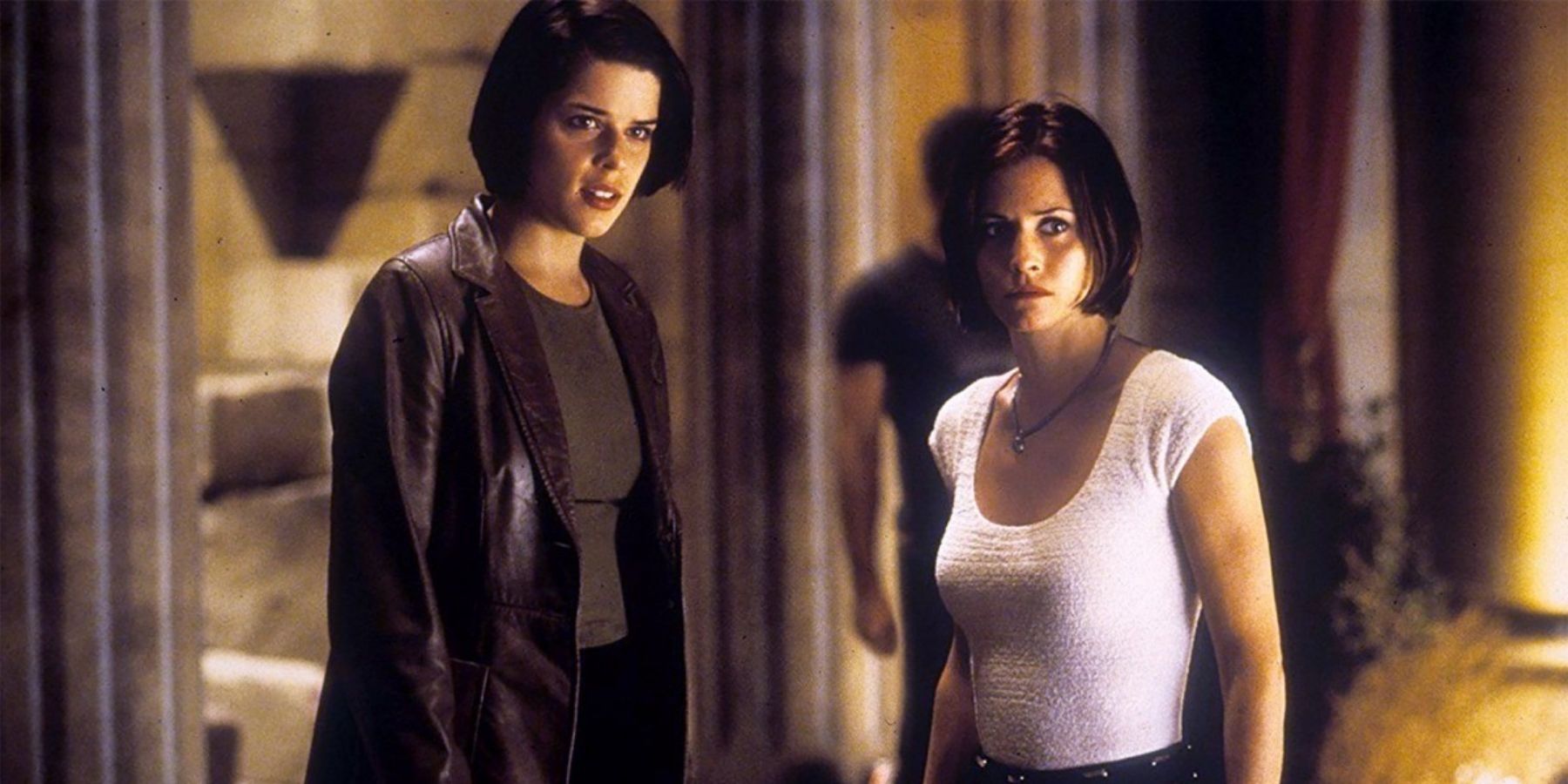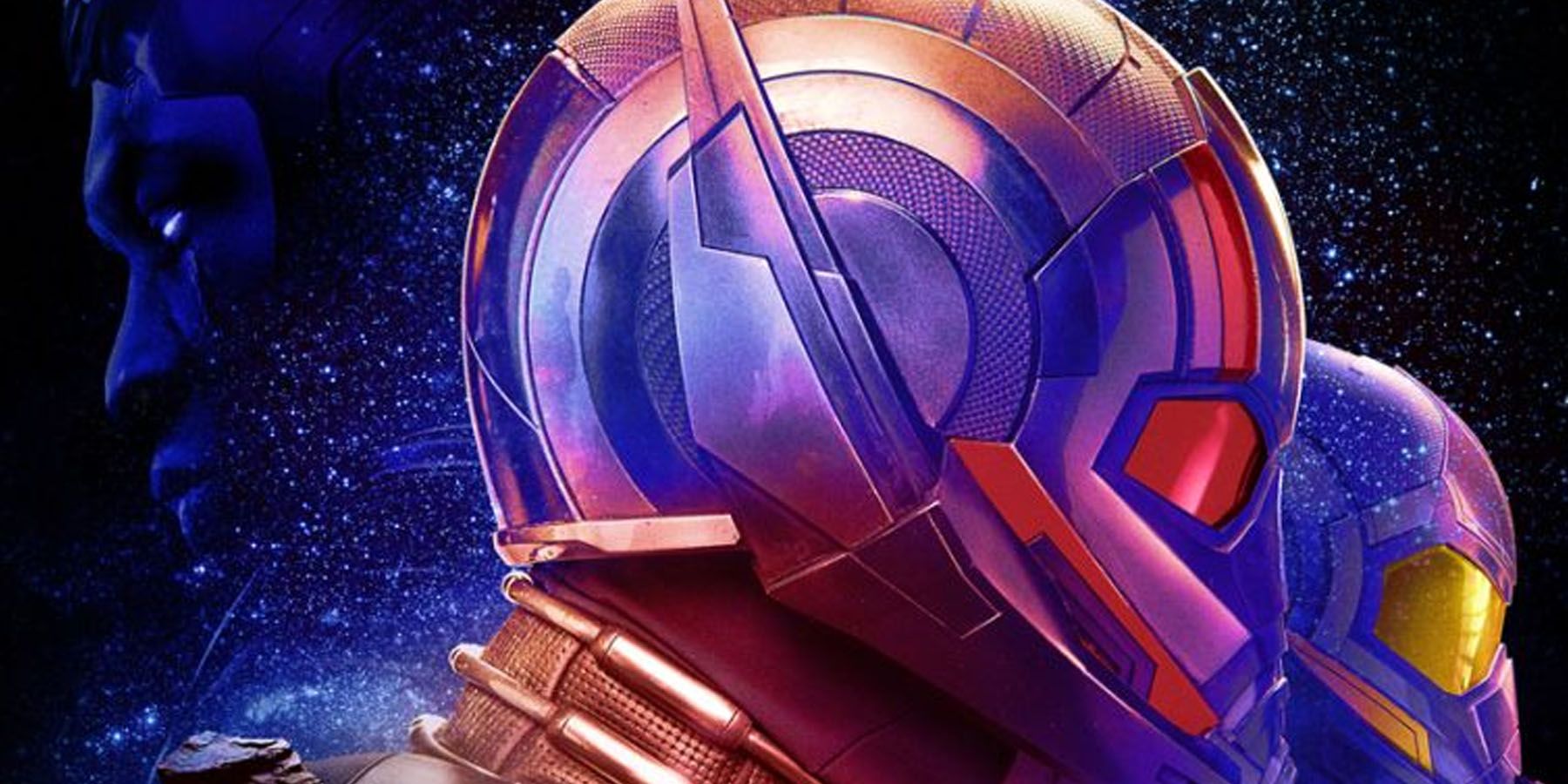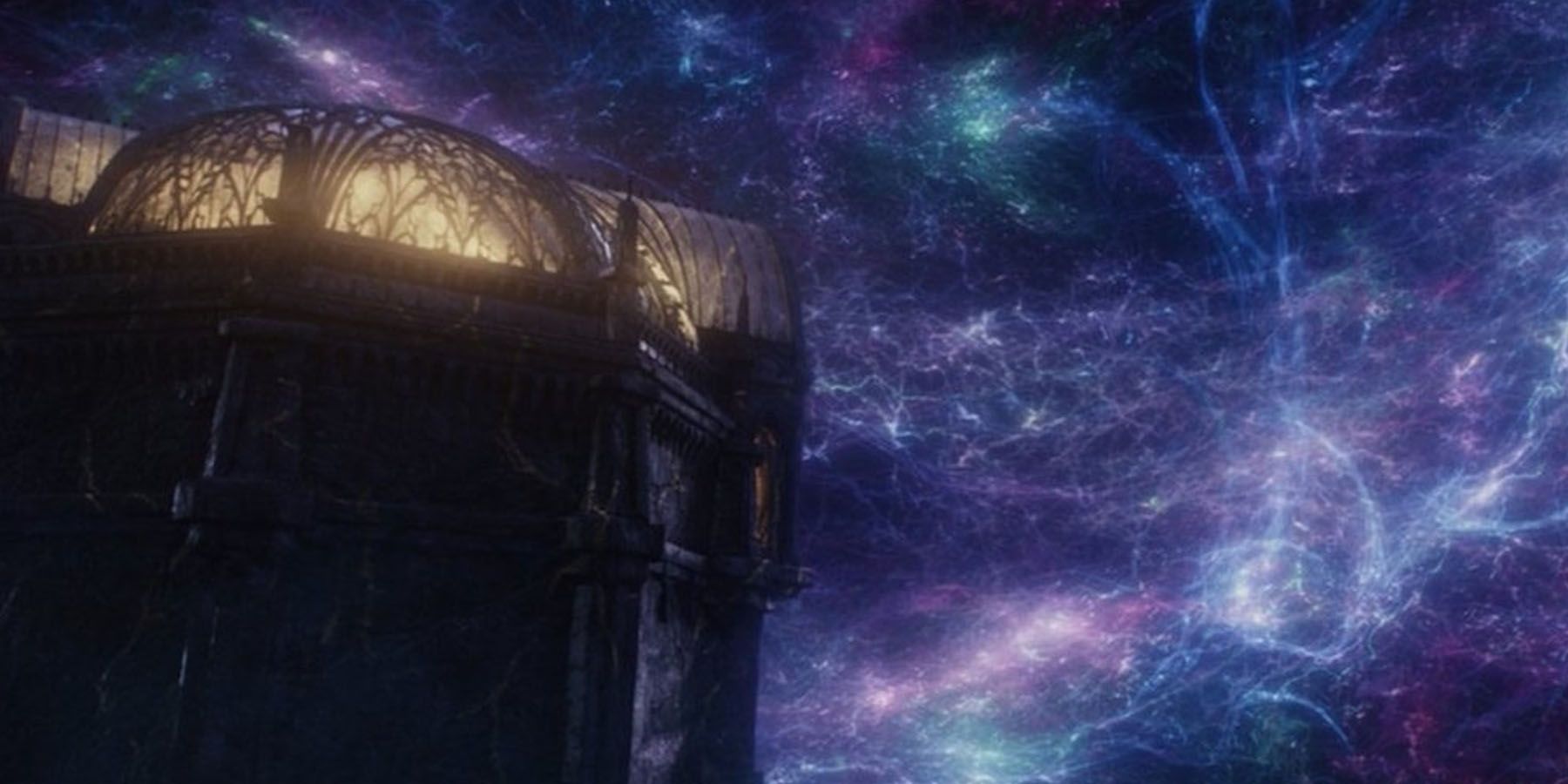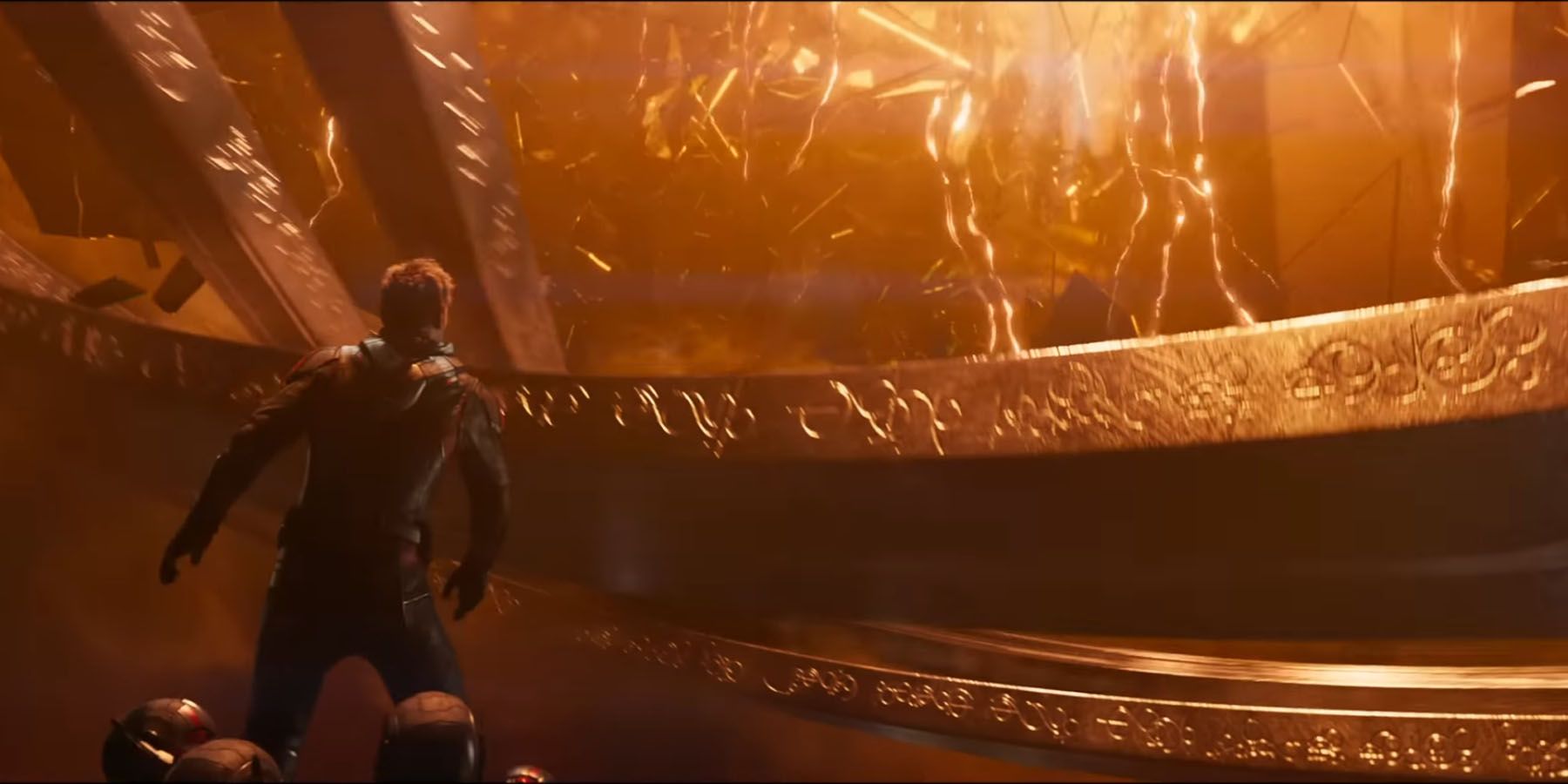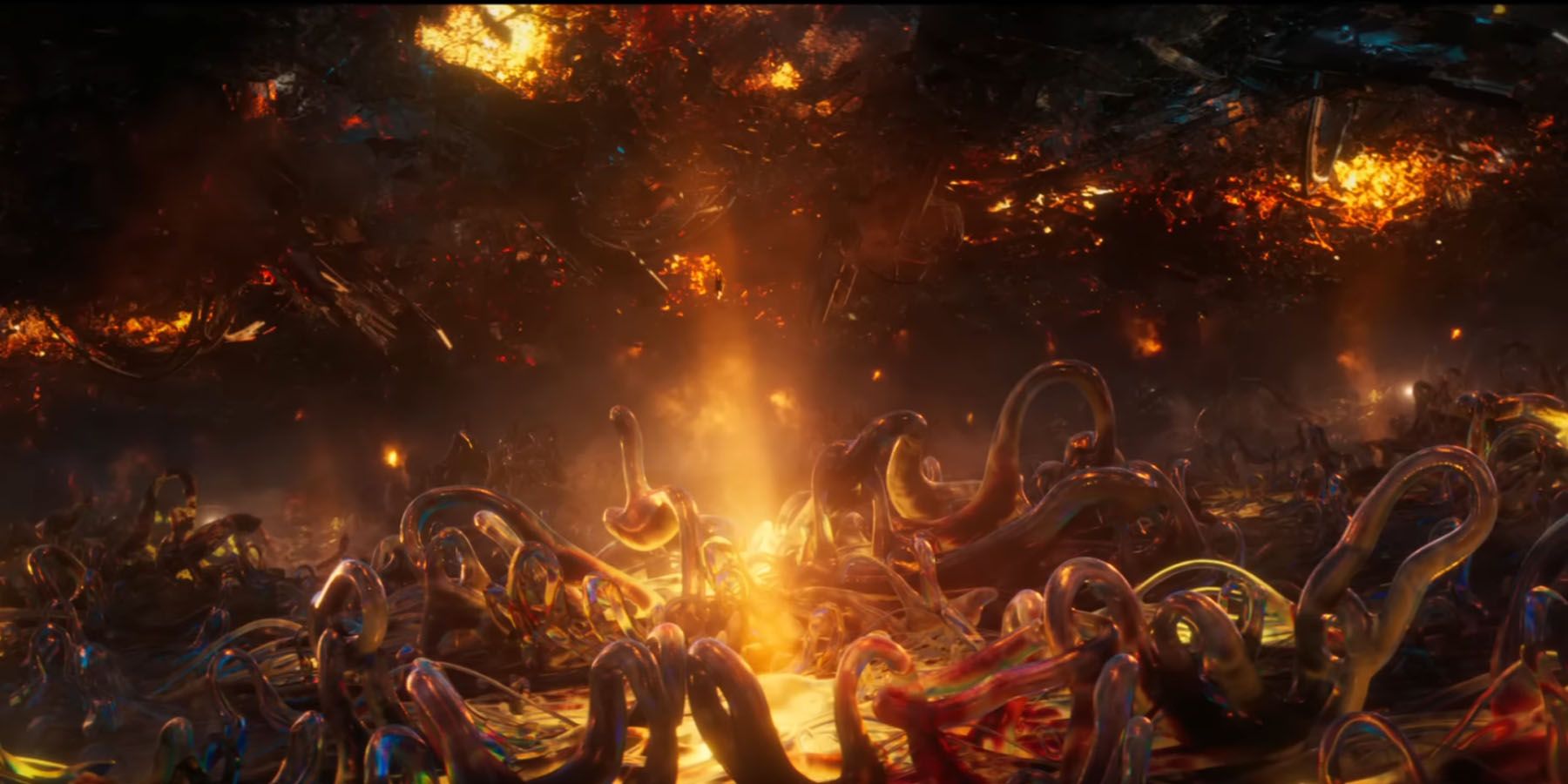Scott Lang, Hope van Dyne, and Cassie Lang bring the Marvel Cinematic Universe to quantum adventures in Ant-Man and the Wasp: Quantumania. In an experiment gone awry, Janet van Dyne is forced to confront horrible realities about her past in the Quantum Realm. Meanwhile, Scott and his family must stop Kang the Conqueror from leaving Chronopolis. With the third chapter of Marvel’s Ant-Man saga paving the way for more sinister things in Phase 5 of the MCU, fans might wonder how the film contributes to the grander story.
Some of the concepts in Quantumania tie together previous reveals about the inner workings of the franchise’s Multiverse. Despite Quantumania being a comedy-centric film, some of its concepts help provide a better understanding of previous events in previous MCU entries.
8 The Multiverse Is Not Just Time
One of the most common associations with the idea of the multiverse is its relationship with time. For instance, What If? and Multiverse of Madness answer questions about heroes and villains taking drastically altered paths, resulting in extreme alternate timelines. Likewise, Spider-Man: No Way Home and Across the Spiderverse show Peter Parkers in different timelines.
However, as Kang the Conqueror and Janet van Dyne explain in Quantumania, the Multiverse is an amalgamation of all dimensions and parallel realities. This is also a reference to the Time Variance Authority and He Who Remains. The Multiverse is a collection of everything ever to happen, be it similar or drastically different. A "Universe" by this definition includes iterations of dimensions and realms to exist within it, like the Soulworld of the Soul Stone and even the Mirror Dimension of Mystic Arts users.
7 The Multiverse Is A Brane
In the subject of the Multiverse and cosmology, there is no “one” version of the Multiverse. Theoretical physicist Brian Greene described four different types: Eternal Inflation, Many-Worlds Interpretation, Holographic Principle, and Simulated Reality. Events in recent MCU films point to its Multiverse as a version of the Many-Worlds Interpretation, which happens when diversions occur to create different realities. However, the wording of its time-travelers makes it seem different.
Janet van Dyne calls the Quantum Realm’s Sub-Atomica a “universe of its own,” while the humans and Sub-Atomica’s citizens say their locations are “above” and “below.” In Loki, He Who Remains explains that he discovered the Multiverse after finding out there are other universes “on top” of his own. This implies the MCU Multiverse shares the equivalent of the Brane Multiverse, where universes of similar properties are “membranes” that “float” in a higher-dimensional “bulk.” Other smaller-scale universes are“branes” in lower-dimensional “bulks.”
6 There’s Quantum, And Then There’s True Quantum
When Dr. Hank Pym entrusted his Pym Particles to Scott Lang, he warned him never to shrink to such an extent that he reached the Quantum Realm, as even the physicist himself didn't understand its properties. When Ant-Man “went quantum” in the first film, the movie was quick to show Quantum Realm seemingly poised to trap Scott before he “sizes back” up. Likewise, the dread surrounding Janet van Dyne’s entrapment in the Quantum Realm is emphasized when Ant-Man and the Wasp shows Ghost as a quantum-entangled bounty hunter, at the risk of being permanently “phased out” of existence at any given moment.
It was weird to see quantum “civilizations” inside Quantumania, where even time itself is pretty much the equivalent of jelly. It didn’t help that Scott’s trip down Kang’s Multiverse Engine Core was, in MODOK’s terms, him experiencing the equivalent of Schrodinger’s Box. Every choice Scott makes spawns copies of him. It seems the alien quantum cities in Sub-Atomica are simply “surface-level” Quantum Realm, with probability-based quantum shenanigans happening in a “true quantum” state contained within the Multiversal Core.
5 The Past Of Kang Is MCU’s Future
As Scott emphasized at the end of Quantumania, the terrifying thing about Kang the Conqueror is his self-awareness. He was exiled by He Who Remains for starting the Multiversal War, and was the only Kang to see the dangers of the Incursions. His death jump started the destruction of the Multiverse. Now the Conqueror is dead, and the post-credits shows the rest of the Kangs planning war against the current Multiverse. Will the Avengers eventually find a way to save the Multiverse?
Did the Conqueror create a self-fulfilling prophecy? When Scott and Cassie are imprisoned in Kang’s empire, the Conqueror tells Ant-Man that not only did he fight the Avengers, he remembers killing Ant-Man. Although Scott “killed” Kang in their final confrontation, this was Kang’s future. It's a horrifying reality to consider that Kang’s “fight with the Avengers” in his past is still an upcoming conflict for the Avengers.
4 Magic, Science, And Probability Space
The correlation between magic and science is one of the most exciting things established in the MCU. Even the Ancient One tells Stephen Strange that harnessing extra-dimensional energies as magic is akin to computer programming. This “science is magic” element is further demonstrated by the conflict between Spider-Man and Doctor Strange in Multiverse of Madness.
Even time travel is approached from a magical and scientific angle. Ant-Man, Iron Man, and Kang proved that time travel is scientifically possible. Meanwhile, Doctor Strange’s spells and the Scarlet Witch’s Hexes also proved time travel is possible through magic. Thanks to the revelation of Kang’s Multiverse Engine, the concept of time travel has been given a significant link. The Engine’s Core is probability space itself, where all choices physically manifest. This revelation may imply that time travel, or even magic, has ties to the quantum realm.
3 Colors Matter And Red Is Chaos
Color schemes matter greatly across MCU characters. Wakanda and Black Panther are associated with black and purple, whereas Doctor Strange and his magic are associated with sparking gold-yellow effects. Kang’s city of Chronopolis in the Sub-Atomica has a white-blue palette, distinct from the multicolored vibrancy of the Quantum Realm. Given Kang’s penchant for greatness, it wasn’t surprising that his time-traveling ship and Multiverse Engine are gold, even after Janet caused it to implode and expand into uselessness before the film’s events.
What’s surprising is the Multiverse Engine's color shift when Ant-Man pushes Kang to join its second implosion. Kang is seemingly disintegrated with bright red mirror-like spikes before being absorbed into the core. On top of this is the explanation that the Multiverse Engine Core is the manifestation of probability space. Interestingly, Wanda Maximoff/the Scarlet Witch's Hexes manifest with the same red glow as Kang’s death scene. This revelation leads to the question: was Kang absorbed into probability space?
2 The Alioth Connection
In Loki, He Who Remains emerges victorious in the Multiversal War after weaponizing Alioth, a trans-temporal entity created by Kang’s variants. Coincidentally, the only other thing beyond space and time in recent MCU media is Quantumania’s Multiverse Engine, whose Core “absorbed” Kang after being tampered with through Pym Particles.
While this “killed” Kang, there’s always the possibility for the Conqueror to manifest the Engine’s power and transform into an all-powerful being, a true “conqueror.” This may mean that the Conqueror becomes Alioth, an alternate Alioth that chose not to be weaponized in an alternate reality, or the “true” threat to Phase 6 as another being. It is yet to be revealed, but is now a possibility.
1 Kangs Of Order, Kangs Of Chaos
In Quantumania, Kang explains he’s a Variant forced into exile in the Quantum Realm after starting the Multiversal War. His “secret” war against his other Variants had him become a true “conqueror” that dominated worlds, ensuring that incursions didn’t threaten existence. Kang is the only one convinced that the incursions will lead to the death of the Multiverse. His perspective is the much-needed other half to the story told in Loki by He Who Remains. The latter mentions his “victory” against the other Variants after forcing everyone to submit, and protecting the Sacred Timeline via the TVA.
While the mid-credits scene in Quantumania reveals a gathering of other Kangs preparing to wage war against the Multiverse, this seems like a red herring. When Kang started his conquest, he wasn’t the only Variant who thought the Multiverse was theirs for the taking. Most importantly, another faction fought back because they refused to be subjugated. This implies the existence of two factions: Kangs dedicated to preserving order in the Multiverse much in the vein of He Who Remains, and those who want to conquer.
Ant-Man And The Wasp: Quantumania was released on February 17, 2023 in the United States.

